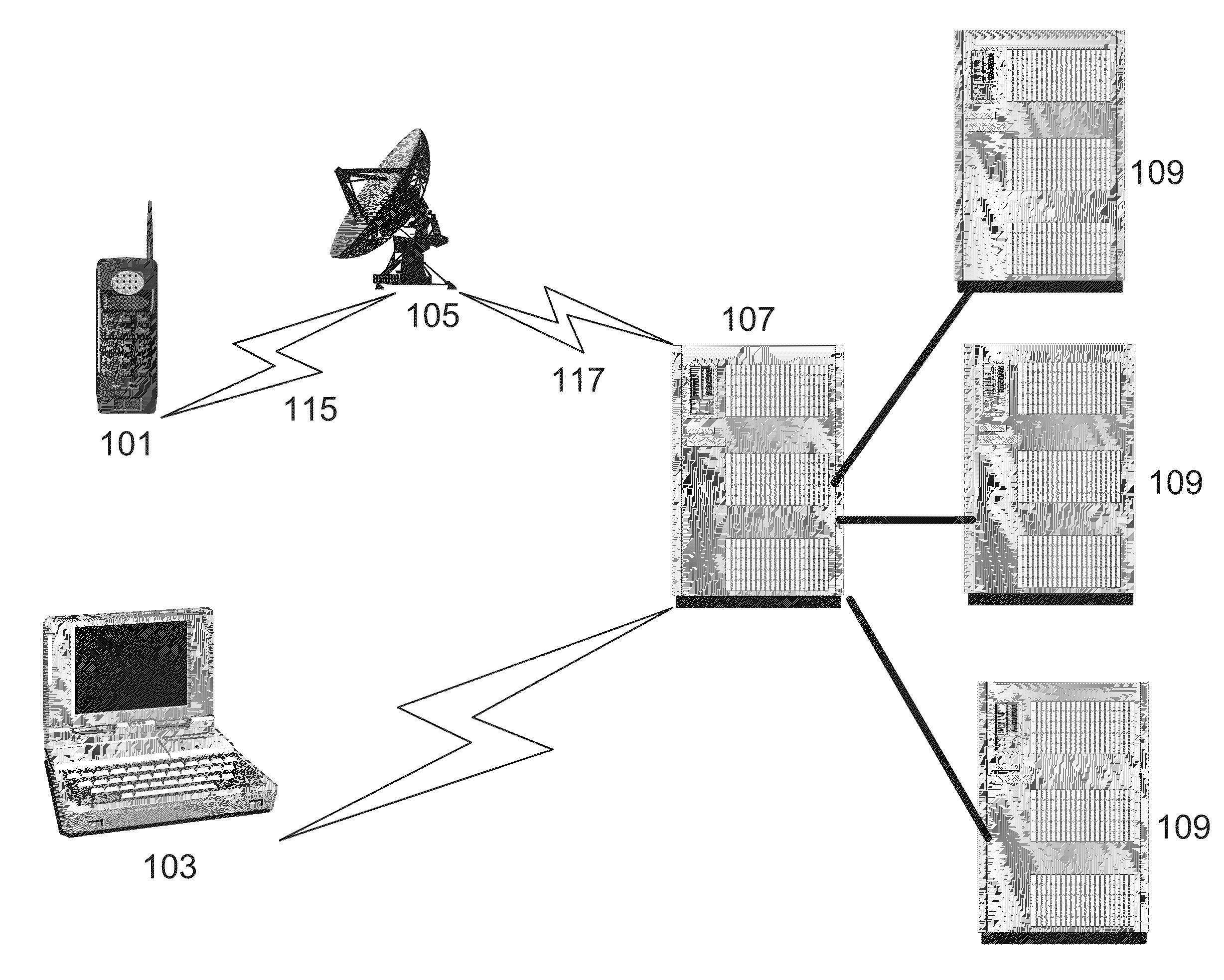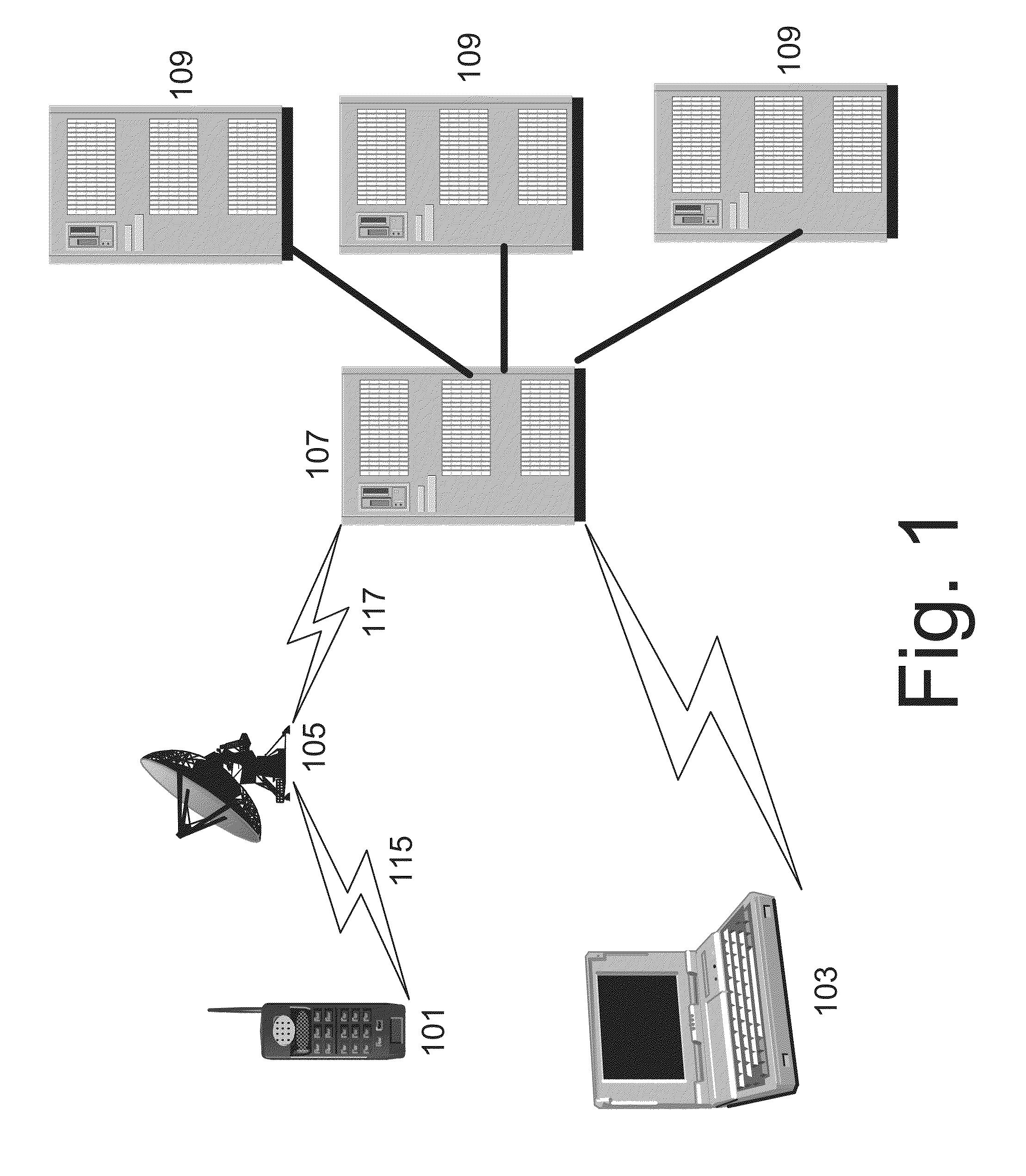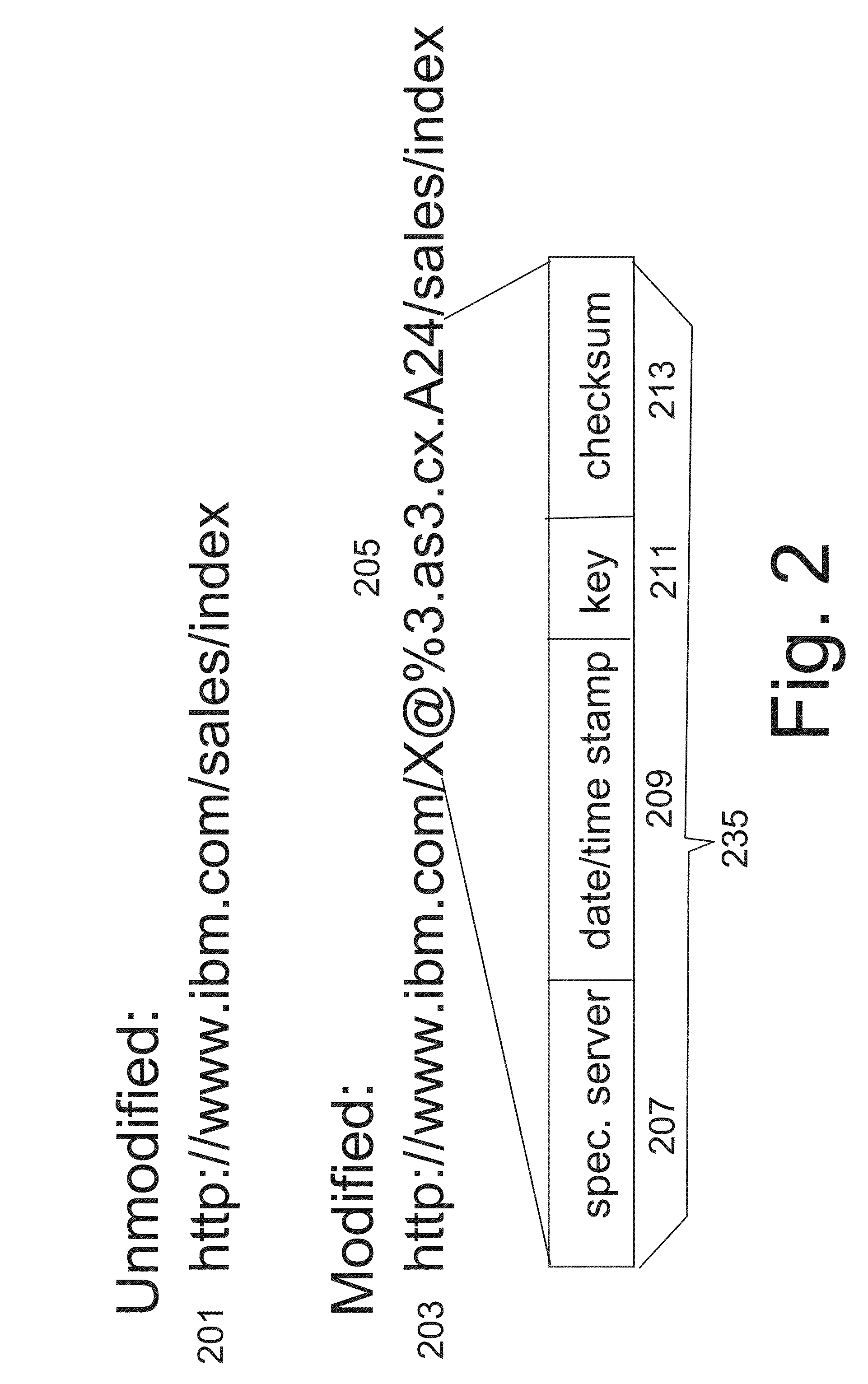Url-based sticky routing tokens using a server-side cookie jar
a server-side cookie and routing token technology, applied in the field of server-side cookie jars for routing tokens, can solve the problems of loss of user's unique ip address, the source ip address is no longer useful as a routing token, and the use of traditional network dispatchers can become a problem, etc., and achieve the effect of restoring the ability of web applications to rely on
- Summary
- Abstract
- Description
- Claims
- Application Information
AI Technical Summary
Benefits of technology
Problems solved by technology
Method used
Image
Examples
Embodiment Construction
[0028]The above mentioned objectives, as well as others, will be described in detail with respect to a preferred embodiment of the present invention as well as to the Figures presented herein. Like numbers in the figures represent the same elements. The preferred embodiment is presented as an example only and is not meant to limit the stated invention or claims in any manner.
[0029]The preferred embodiment of the present invention utilizes a modification to the URL in an HTTP or HTTPS document such that the document uniquely identifies a given client and binds the client to a particular server for the duration of a session. In conjunction with the URL modification, a server-side cookie jar is implemented that enables the server to store cookies on behalf of a particular client. This releases the client or client-side proxies from the responsibility of storing the cookies. The cookie-jar approach renders the issue of cookie-storage on the client moot. Using the modified client-unique ...
PUM
 Login to View More
Login to View More Abstract
Description
Claims
Application Information
 Login to View More
Login to View More - R&D
- Intellectual Property
- Life Sciences
- Materials
- Tech Scout
- Unparalleled Data Quality
- Higher Quality Content
- 60% Fewer Hallucinations
Browse by: Latest US Patents, China's latest patents, Technical Efficacy Thesaurus, Application Domain, Technology Topic, Popular Technical Reports.
© 2025 PatSnap. All rights reserved.Legal|Privacy policy|Modern Slavery Act Transparency Statement|Sitemap|About US| Contact US: help@patsnap.com



